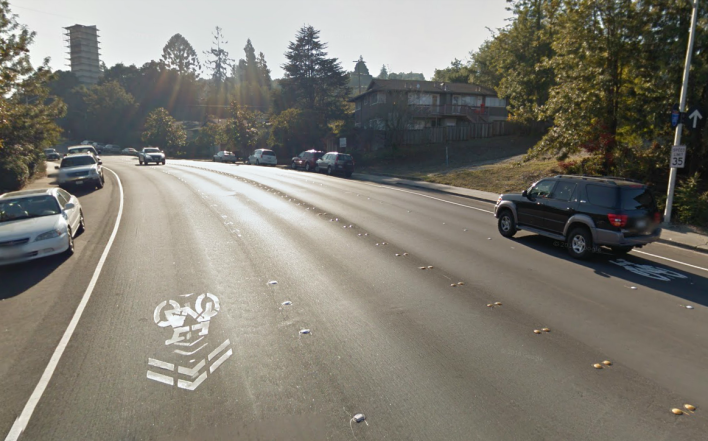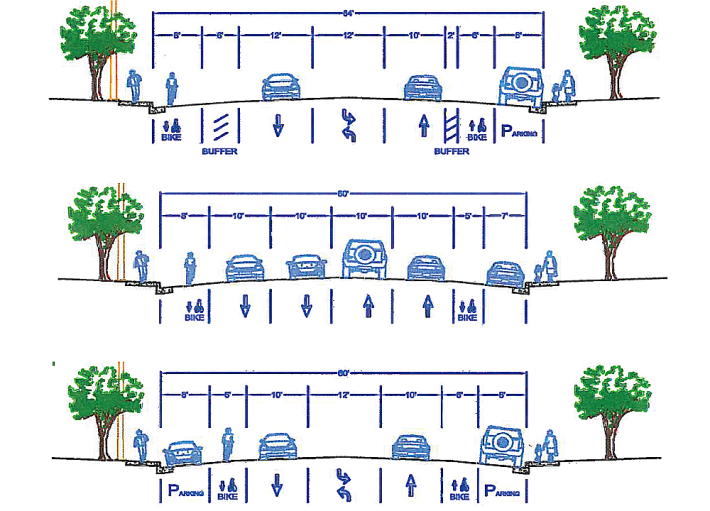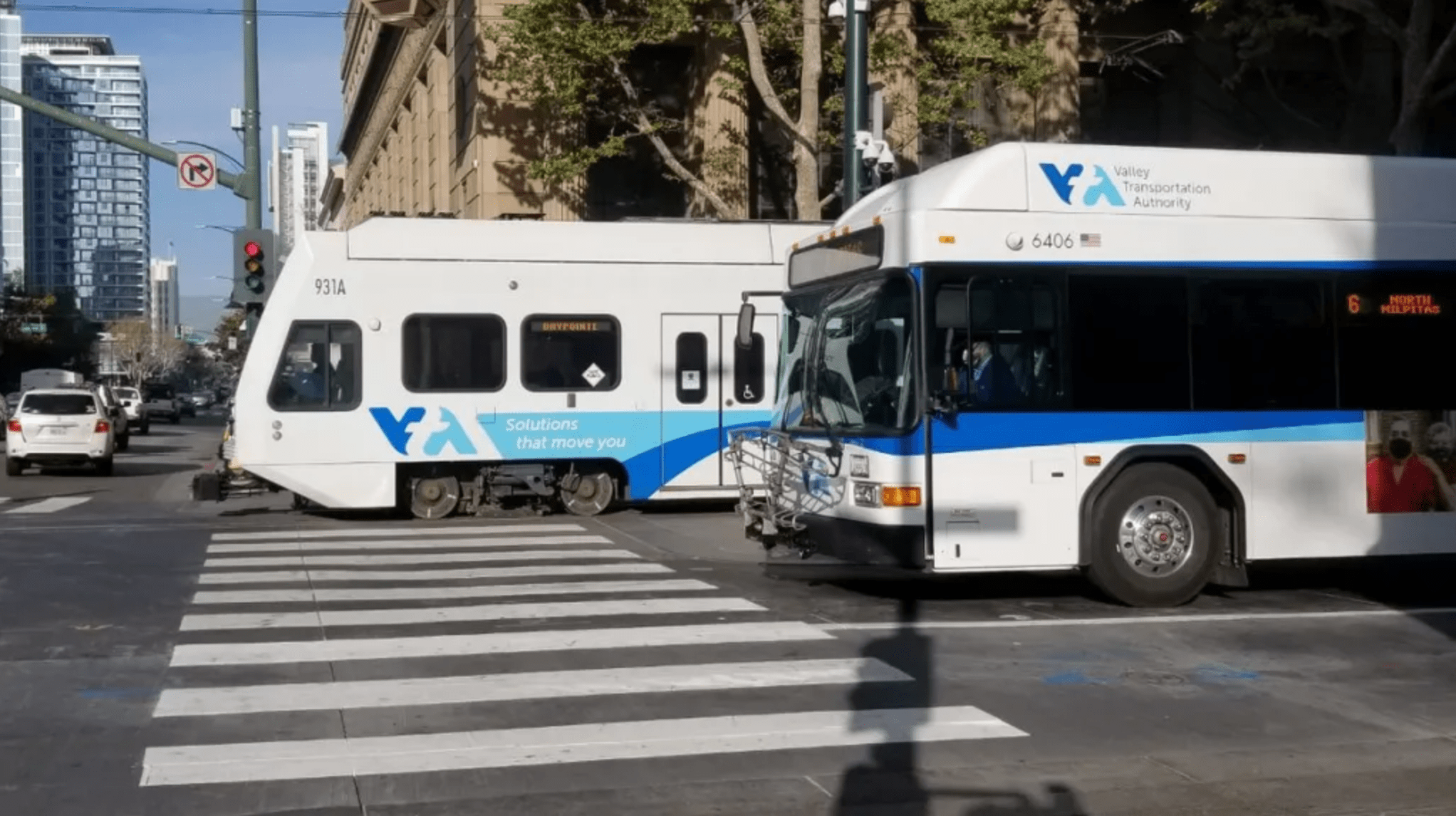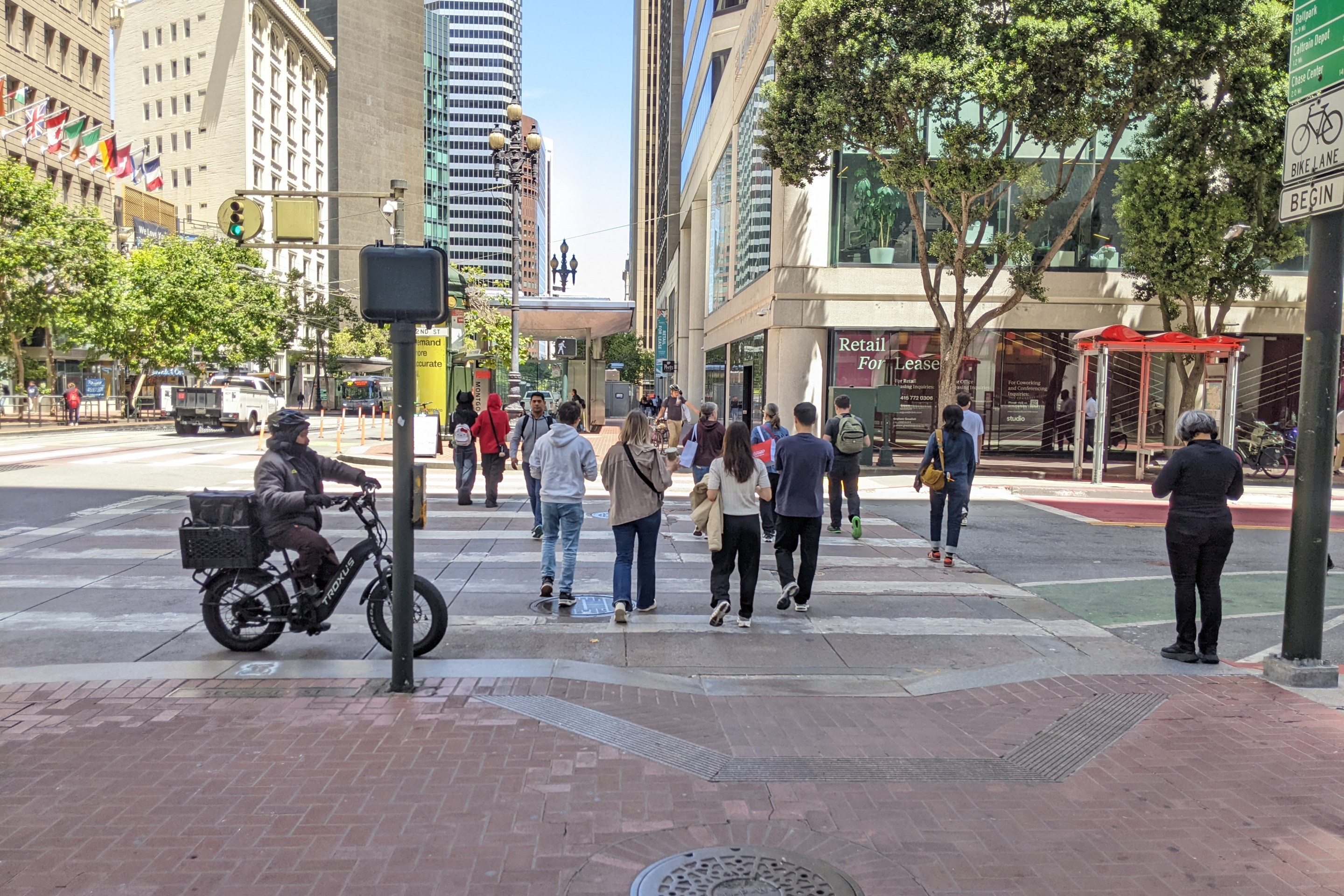
After rejecting the idea as too ambitious in 2012, Redwood City transportation officials last week recommended a road diet on Farm Hill Boulevard as a one-year pilot project.
If the City Council approves the project on January 26, two miles of the street will get the road diet treatment in about six months.
Redwood City staff say going from four lanes to three "is one of the most effective engineering changes available to achieve the goals of enhancing safety and livability for residents, visitors, and commuters" in their report for Monday’s City Council meeting [PDF]. "It will reduce the existing, excess capacity during off-peak times which facilitates unsafe driving."
City staff found that 60 to 90 percent of car drivers currently exceed the 35 mph speed limit on Farm Hill Boulevard, which crosses the southernmost extent of Redwood City from Alameda de las Pulgas to Highway 280 through neighborhoods of single-family homes. Speeding is the primary cause of more than 40 percent of crashes causing injury on the street, which occur roughly every other month on average.
"Farm Hill Boulevard is one area where the city is piloting a Complete Streets approach and has had a long history of community concerns," wrote Redwood City spokesperson Meghan Horrigan in an email. "The city continues to receive complaints about safety and property damage due to speeding and reckless driving."
Last May, two 19-year-olds seen speeding in a Mercedes on Farm Hill Boulevard crashed into a tree, sending them both to the hospital with serious injuries.
"The house at the corner of Glennan and Farm Hill has had cars 'arrive' several times and they now have large boulders on the corner to protect the house," reported resident Rebecca Ratcliff. "Those boulders have been hit several times, including one last summer that woke the mother." Ratcliff says she knows two families who moved away from Farm Hill due to the threat posed to their children by dangerous traffic.

"Farm Hill has become a safety hazard, part of that due to an outdated four-lane design," said resident Jim Luna at the meeting. "We're not only making it safer, but also making it healthier, for everybody."
The new design, which calls for a travel lane in each direction, a center left-turn lane, and bike lanes on both sides of the street, would apply from Alameda de la Pulgas to just before Woodhill Drive, the main entrance to Canada College. Four lanes would be kept on sections of Farm Hill approaching Emerald Hill Road to avoid delaying traffic. The design was also “adjusted to minimize parking removal in front of residences.”
The re-design was initially proposed by Redwood City transportation planners in June 2012 but considered too ambitious by senior city officials and the City Council, who received complaints from some residents fearing it would cause traffic delays, even though the city's traffic study showed that the longest possible delay for drivers at an intersection would be just 14 seconds.

“Staff recommends that the City continue implementing the General Plan goals for safe streets on roadways with fewer issues of traffic volume and perception of radical change,” stated the October 2012 staff report [PDF] to City Council, which noted that safety improvements on other streets “less controversial and disruptive to residents” could be pursued instead.
At the time, the council directed city staff to pursue traffic safety projects on other streets and implement improvements to Farm Hill other than changing the number of lanes. In summer 2013, after the street was resurfaced, new sharrows, outside edge lines, yield markings at unsignalized intersections, and "a high-friction surface" at one particularly tight corner were installed. If the council had not intervened, the lane reduction and bike lanes would have been implemented at that time.
City engineers designed a similar four-to-three lane reduction for Brewster Avenue that was installed last summer, which they report “has been well received.” Additional pedestrian safety improvements are planned for Brewster in 2015. The Brewster Avenue road diet is the most recent in a series of such projects undertaken by Redwood City over the past 20 years, including Edgewood Road, Alameda de las Pulgas, Veterans Boulevard, Middlefield Road, Industrial Way, Winslow Street, and part of Jefferson Avenue. The city’s data for the most recent of these projects showed reductions in car crashes ranging from 30 to 77 percent after travel lanes were removed and bike lanes added.
If approved by the City Council on Monday, the four-to-three lane re-striping of Farm Hill Boulevard will be completed as a pilot project by July, followed by a one-year evaluation period in which city staff will collect data to determine if the changes should be made permanent. On Monday the Council will also consider creating a “Complete Streets Advisory Committee,” similar to the many Bicycle and Pedestrian Advisory Committees (BPAC) already established in neighboring cities.





